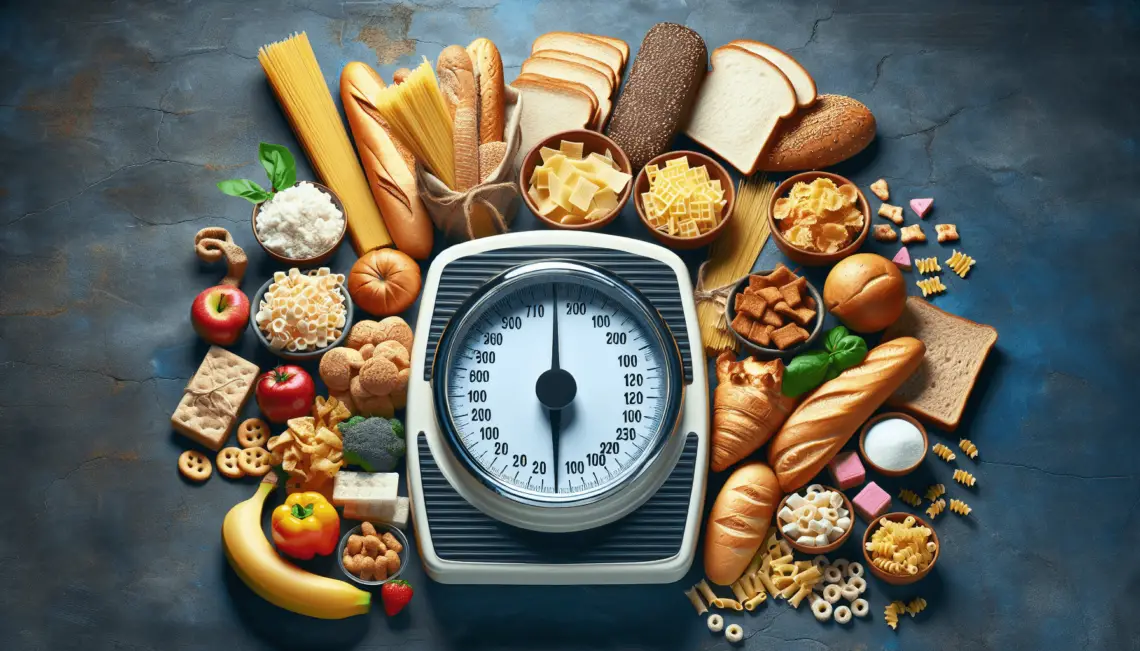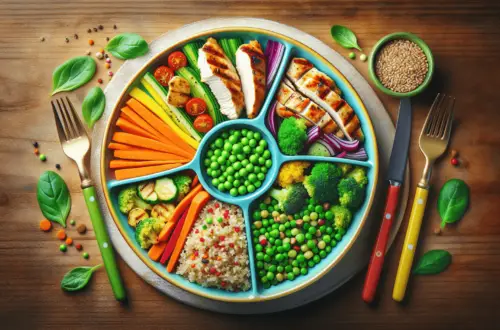Starting the Atkins diet can be an exciting journey towards a healthier lifestyle, but it’s not without its initial bumps in the road. You might experience some common side effects, such as headaches, dizziness, or fatigue as your body adjusts to a lower carbohydrate intake. These feelings, often referred to as the “Atkins Flu”, can last a few days to a couple of weeks. Additionally, you may find it challenging to plan meals and snacks, especially if you’re used to a diet rich in carbs. Rest assured, with proper preparation and patience, these obstacles can be managed, setting you on a path to successful weight loss and improved energy levels.
What Are Common Side Effects Or Challenges When Starting The Atkins Diet?
Have you ever wondered what potential side effects or challenges you might face when starting the Atkins Diet? This low-carb, high-protein diet has gained popularity over the years, but like any diet change, it comes with its own set of challenges and side effects. Let’s delve into what you might experience and how to navigate these issues for a smoother transition.
Understanding the Atkins Diet
Before we dive into the specifics, it’s important to understand what the Atkins Diet actually is. The Atkins Diet is a low-carbohydrate diet founded by Dr. Robert Atkins. Its primary goal is to help people lose weight by limiting carbohydrate intake and encouraging protein and fat consumption.
Phases of the Atkins Diet
The Atkins Diet is broken down into four phases:
- Induction: The most restrictive phase, limiting carb intake to 20-25 grams per day.
- Balancing: Slow addition of nutrient-rich and fiber-rich carbs.
- Pre-Maintenance: Further increase in carbohydrate intake.
- Lifetime Maintenance: Sustained intake to maintain weight.
Each phase plays a crucial role in how your body adjusts to this eating plan.
Common Side Effects
As with any significant dietary change, your body takes time to adjust. The Atkins Diet is no exception. Here are some common side effects you might experience:
Keto Flu
The “Keto Flu” refers to flu-like symptoms that some people experience when they start a low-carb diet. This isn’t an actual flu, but it does include headaches, tiredness, nausea, and irritability.
Constipation
With a significant reduction in carbohydrate intake, particularly fiber-rich carbs, you might find yourself facing constipation.
Bad Breath
A common but less talked-about side effect is bad breath, often described as a metallic taste. This is due to the production of ketones, which are by-products of fat metabolism.
Fatigue and Weakness
As your body adjusts to burning fat instead of carbohydrates for energy, you might experience periods of fatigue and weakness.
Muscle Cramps
You might experience muscle cramps due to an electrolyte imbalance, often caused by reduced levels of important minerals like sodium, potassium, and magnesium.
Dizziness
Reduced carbohydrate intake can sometimes lead to dizziness due to lower blood sugar levels or dehydration.
Nausea
Some people experience nausea when their bodies begin the process of shifting from burning carbs to burning fat for energy.
Challenges You Might Face
Starting the Atkins Diet isn’t just about adjusting to physical changes. There are social, emotional, and logistical challenges as well.
Social Pressures
Eating out with friends or attending social gatherings can become tricky. The low-carb restriction can feel limiting when you’re surrounded by tempting high-carb options.
Emotional Cravings
Carbs often provide comfort and are present in many widely enjoyed comfort foods like bread, pasta, and sweets. Giving these up suddenly can lead to significant emotional cravings.
Meal Planning
Adapting to a whole new way of eating involves some learning curves. Planning meals that fit into your carb limits while still being diverse and satisfying can be challenging.
Hidden Carbs
Carbohydrates are hidden in many foods you might not expect, like sauces and dressings. This means you have to become meticulous about reading food labels.
Dining Out
Finding restaurants that offer low-carb options can be difficult. This can make dining out feel like a chore rather than a pleasure.
Strategies to Overcome Challenges
Fortunately, there are ways to overcome these challenges. Here are some strategies to help you succeed on the Atkins Diet.
Gradual Transition
Instead of diving headfirst into the induction phase, consider a more gradual transition to reduce the shock to your system and potentially alleviate side effects.
Stay Hydrated
Drinking plenty of water can help mitigate many side effects, such as dizziness, muscle cramps, and constipation.
Increase Fiber Intake
Incorporating more fiber-rich, low-carb vegetables can help with constipation issues.
Electrolyte Balance
Monitoring and maintaining your electrolyte levels can help alleviate muscle cramps and dizziness. Consider incorporating foods rich in sodium, potassium, and magnesium, or taking supplements if necessary.
Plan Ahead
Meal prepping can save you from the guesswork and temptation that come from being unprepared. Plan your meals and snacks ahead of time to ensure you stay within your carb limits.
Read Labels
Familiarize yourself with reading food labels to avoid hidden carbs. This can help you stay within your daily carb allowance.
Lean on Support
Join online forums, groups, or find a diet buddy to share experiences, tips, and encouragement. A supportive community can make a significant difference.
Debunking Myths
There are many myths surrounding the Atkins Diet, some of which may deter you from starting. Let’s clear up a few:
Myth 1: It’s Just Another Fad Diet
While low-carb diets come and go in terms of popularity, the Atkins Diet is rooted in scientific principles. Numerous studies have validated its effectiveness for weight loss and other health benefits.
Myth 2: High Protein = Unhealthy
Some people worry that the emphasis on protein could lead to kidney damage or other health issues. However, for most healthy individuals, high protein intake is safe and can be beneficial. Always consult with a healthcare provider to ensure it’s appropriate for you.
Myth 3: You Can Eat Unlimited Fat
While the Atkins Diet encourages fat intake, this doesn’t mean you can consume it without limits. Focus on healthy fats and maintain a balanced approach.
Psychological Aspects
Starting a new diet can be psychologically challenging. Here are some mental hurdles you might face and how to address them.
Fear of Failure
It’s normal to feel anxious about sticking to a new eating plan. Remember, it’s a learning process. Mistakes happen, and they’re a part of your journey.
Comparing Yourself to Others
Every body is unique, and comparing yourself to others can lead to disappointment. Focus on your personal progress and celebrate small victories.
Emotional Eating
Carbohydrates are often tied to emotional comfort. Developing new coping mechanisms, such as exercise, meditation, or hobbies, can be beneficial.
Benefits to Look Forward To
Despite the initial challenges, there are numerous benefits to look forward to when starting the Atkins Diet.
Weight Loss
Many people experience significant weight loss, especially in the early stages of the diet. This can be a great motivator to keep going.
Improved Metabolic Health
Low-carb diets like Atkins can improve various markers of metabolic health, including blood sugar, insulin levels, and cholesterol.
Increased Energy
Once your body adapts to burning fat for fuel, many people report sustained energy levels throughout the day.
Reduced Cravings
Over time, cravings for sugary and high-carb foods often diminish, making it easier to stick to the diet long-term.
Better Mental Clarity
Some people experience improved mental clarity and cognitive function on a low-carb diet.
Atkins Diet vs Other Low-Carb Diets
The Atkins Diet isn’t the only low-carb diet out there. Here’s a quick comparison with other popular low-carb diets.
| Aspect | Atkins Diet | Keto Diet | Paleo Diet |
|---|---|---|---|
| Carb Limit | Starts at 20-25 grams/day | Usually 20-50 grams/day | No strict carb limit, focuses on whole foods |
| Phases | Four phases | No formal phases | No formal phases |
| Dietary Focus | Low-carb, high protein | Low-carb, high fat | Whole and unprocessed foods |
| Flexibility | More gradual increase in carbs | Strict on carb and fat ratios | More flexible, but no processed foods |
Real-Life Success Stories
Hearing real-life success stories can be incredibly motivating. Here are a couple of examples.
Sarah’s Journey
Sarah, a 35-year-old mother of two, struggled with weight loss for years. After starting the Atkins Diet, she lost 30 pounds in six months and reported increased energy levels that helped her keep up with her kids.
Mike’s Transformation
Mike, a 40-year-old office worker, faced constant fatigue and borderline diabetes. Within a year on the Atkins Diet, he lost 50 pounds and his blood sugar levels normalized, eliminating the need for medication.
Frequently Asked Questions
Can I Drink Alcohol on the Atkins Diet?
Yes, but choose low-carb options like dry wine or spirits mixed with soda water.
What If I’m Vegetarian?
The Atkins Diet Can be modified for vegetarians, although it may require more planning to ensure you get adequate protein.
How Long Until I See Results?
Many people see results within the first few weeks, particularly during the induction phase. However, results vary by individual.
Is the Atkins Diet Safe Long-Term?
For most healthy individuals, the Atkins Diet is safe long-term. However, always consult your healthcare provider for personalized advice.
Conclusion
Starting the Atkins Diet comes with its set of side effects and challenges, but with the right strategies and mindset, you can successfully navigate this transition. Remember, every major change comes with a learning curve. So, give yourself the grace to adapt and celebrate your progress along the way.
Whether you’re aiming for weight loss, improved metabolic health, or just curious about trying a new diet, understanding what to expect and how to manage it will set you up for success. Happy low-carbing!





